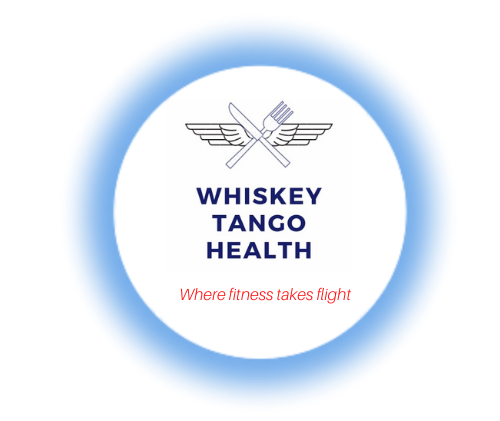Most of us have heard the old saying, “Calories in, Calories Out”. If you are like me, that’s how I understood how weight control worked, create a calorie deficit, burn more calories than you take in. Seems simple right? Well, that’s just it, it is a little too simple.
First what is a calorie? A Calorie is nothing more than a measurement of energy. Our bodies burn energy and we fuel our bodies with energy. This unit of measurement has been in use by physicists since the 1790s and was used throughout the 1800s. In the 1870s, Pierre Eugene Berthelot invented the bomb calorimeter, however it wasn’t until 1894 that the use of the calorie was associated with dietary energy expenditure.
The calorie you see on a package of food is actually a percentage of a kilocalorie (kcal), or 1,000 calories. You may see calories measured in kilojules which is the metric measurement of calories. Either way, a calorie is measured in a lab with a bomb calorimeter. This measures the amount of energy needed to raise 1 kilogram of water 1 degree Celsius. Food is placed into a sealed container surrounded by water, the food is completely burned off and the resulting measurement is the calorie of that food.
The problem is that our bodies are not a bomb calorimeter, our bodies are a complex system of enzymes, hormones and many other complicated biological systems. Do calories come into play? Well, yes of course they do, but the Calorie In, Calorie Out (CICO) model doesn’t work in itself. Think about it, if your body burns the standard 2,000 cal/day, would 2,000 calories of chocolate cake perform in your body the same as 2,000 calories of steak and vegetable? Of course not, that’s because our bodies use every molecule of food differently. Which seems pretty obvious, however for many of us (myself included) I just thought about food as calories.
Our bodies are extremely complex and scientists still don’t exactly know how they process food, but in the past few years we have come a long way into understanding more of it. To break it down, we can look at food as two groups, Macronutrients and Micronutrients. Macronutrients, also called “macros,” are the main nutrition groups. These are Protein, Fat and Carbohydrate. The micros are everything else, vitamins, minerals, fiber, etc. The micronutrients exist inside the macronutrients.
Our bodies can live on all three macros, or at least two of them, Protein and Fat. We can live and thrive without Carbohydrate, but we can’t thrive without Protein or Fat. Let’s examine these macros to get a better understanding of them.
Protein. Proteins are found in both animals and plants. Proteins are foods that contain a high amount of Protein but can also include the other macros. Some examples would be Spinach and Beef. One cup of spinach has about 5g of Protein, 0.5g of Fat and 6.8g of Carbohydrate. A half pound (8oz) of red meat has about 60g of Protein, 40g of Fat and 0 Carbohydrate. So one would think that Protein is the same regardless of the source, which isn’t exactly the true. Our bodies process protein through amino acids. These amino acids do different things in our bodies which we will discuss in the amino acids chapter in detail. For now, to simplify, animal protein absorbs more completely than plant protein because of the amino acids thing. Protein is
an important part of the building blocks of our muscles, hair, skin, etc. Protein can also be broken down in the liver to be used as glucose and is absolutely essential to health.
Fats. Fats are also found in both plant and animal sources. Dietary fats should not be confused with body fat and should be considered as energy. Our bodies can burn either fat or carbohydrate to operate, however our bodies use fat much more efficiently than carbohydrate as a fuel source. There are many types of fats and this is where it gets confusing. There are saturated fats and unsaturated fats, which basically mean that saturated fat is solid at room temperature and unsaturated fat is liquid at room temperature. Unsaturated fats include, monounsaturated, polyunsaturated and trans fat. We will dive deeper into this in the Fat section. For now know that these fats are acids and work differently in our bodies, but all of them provide essential nutrition and energy.
Carbohydrates. Carbohydrates are basically anything that our liver turns into glucose. Carbohydrates are not found in any significant amount in animal products, only in plants. Carbohydrates are also man made, from plants such as table sugar and high fructose corn syrup. We will dive deeper into sugars in the sugar section, but for now to keep things simple, any carbohydrate from natural plant form or processed works essentially the same way. The liver converts it into glucose and sends it into the blood stream which is used by the cells and the extra is turned into body fat.
I know it seems like we would need Carbohydrate for blood sugar, I thought this for my whole life, however we don’t. Our body can actually create it’s own glucose from protein and fat in the liver! For more on how this works, go to the Liver section of the website.
That is a very simplified explanation of macros, Protein and Fat create energy from amino acids and Carbohydrate becomes sugar for energy which the surplus is then stored as body fat.
So do calories really matter? Again, yes and no. We need food for energy which is measured in calories. Our bodies burn energy which is measured in calories. However, the types of calories we eat are much more important than the amount we eat. Our bodies have regulators that control our hunger and our satiety (when we are full) through hormones. Generally speaking grelin (the rumble in your stomach) is the hormone that requests food and there are multiple hormones that tell us to stop eating. The signal to stop eating comes from different places in our bodies, however our stomach and intestines are where the main receptors are located. While we are processing food, the hormones sense if we have enough nutrition. Foods that are rich in nutrition, such as meats and vegetable nourish our bodies, complete our nutrition requirement and send the signal to stop eating. Foods that are not rich in nutrition such as processed food and sweets do not complete our nutrition requirement and signal the body to eat more. Certain foods, especially those high in sugar, also trigger addictive sensors in our brains to over consume. I’m sure we can all relate to this. Imagine eating whole foods such as a salad and a salmon steak. How much do you think you can eat? There is a point where you hit the meat sweats, regardless of how hungry you were. Then bring out a piece of cake or ice cream and all of a sudden you are hungry again. Your body obviously has enough nutrition, but the addictive sensors light up and convince your hormones to demand the sweets. Think of eating a burger and fries or some potato chips. You can eat handfuls of them and never get “full” because your body hasn’t really gotten any real nutrition. It keeps the hunger hormone active hoping you will eat something nutritious. In the end, protein, fat and whole carbohydrate (with fiber) send the correct signals to our hormones to self regulate our intake of food. Our
bodies aren’t regulated by “calories” but by actual nutrition that our food delivers. So in the end, calories DO matter, but the TYPE of calories are much more important than the AMOUNT of calories.


